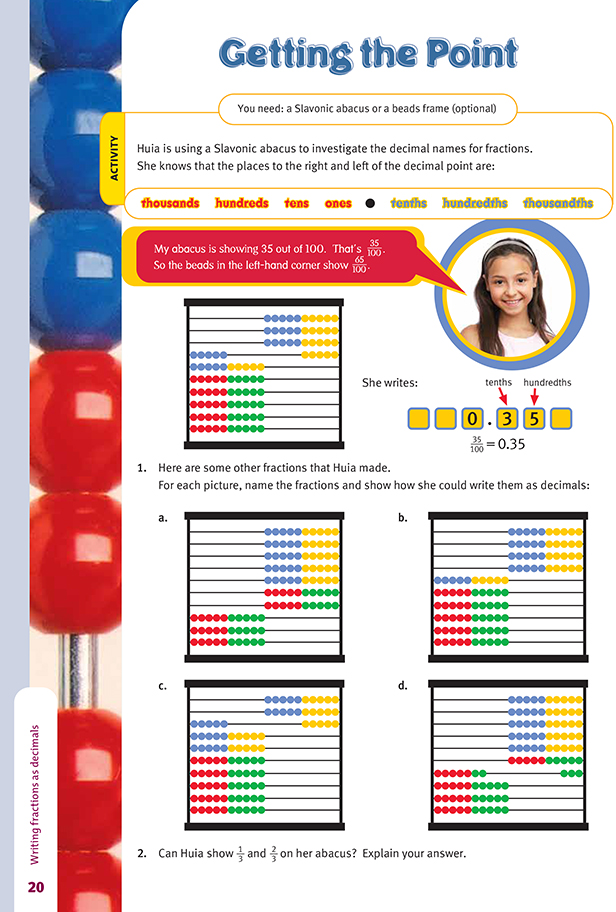This is a level 3 number link activity from the Figure It Out series. It relates to Stage 6 of the Number Framework.
A PDF of the student activity is included.
Click on the image to enlarge it. Click again to close. Download PDF (226 KB)
write fractions as decimals
A Slavonic abacus or a beads frame (optional)
FIO, Link, Number, Book Two, Getting the Point, page 20
The important feature of this activity is that the whole (in this case, a beads frame) is separated into two parts in the corners. These parts can therefore be represented as a fraction of 100 if the whole is considered to be 100 out of 100.
Make sure that the students notice that the fractions shown in question 1 are complementary because they always add to 1 or 100/100 . A useful warm-up activity may be to have the students make a chart showing some addition complements to 100, for example:
10 + 90 = 100, 20 + 80 = 100, 30 + 70 = 100, …
5 + 95 = 100, 15 + 85 = 100, 25 + 75 = 100, …
You could also explore question 2 by using a calculator as well as the abacus mentioned in the question. If the students press 1 ÷ 3 and = on a calculator, the display will show 0.3333333. If they then multiply 24
this by 3, the calculator display will show 0.9999999 rather than 1. This rounding error is caused by the problem that 1 cannot be divided by 3 exactly in a decimal system, and so a recurring decimal is formed.
Answers to Activity
1. a. 70/100 or 7/10 = 0.7 30/100 or 3/10 = 0.3
b. 40/100 or 4/10 = 0.4 60/100 or 6/10 = 0.6
c. 25/100 or 1/4 = 0.25 75/100 or 3/4 = 0.75
d. 63/100 = 0.63 37/100 = 0.37
2. No, because 100 will not divide evenly by 3.
